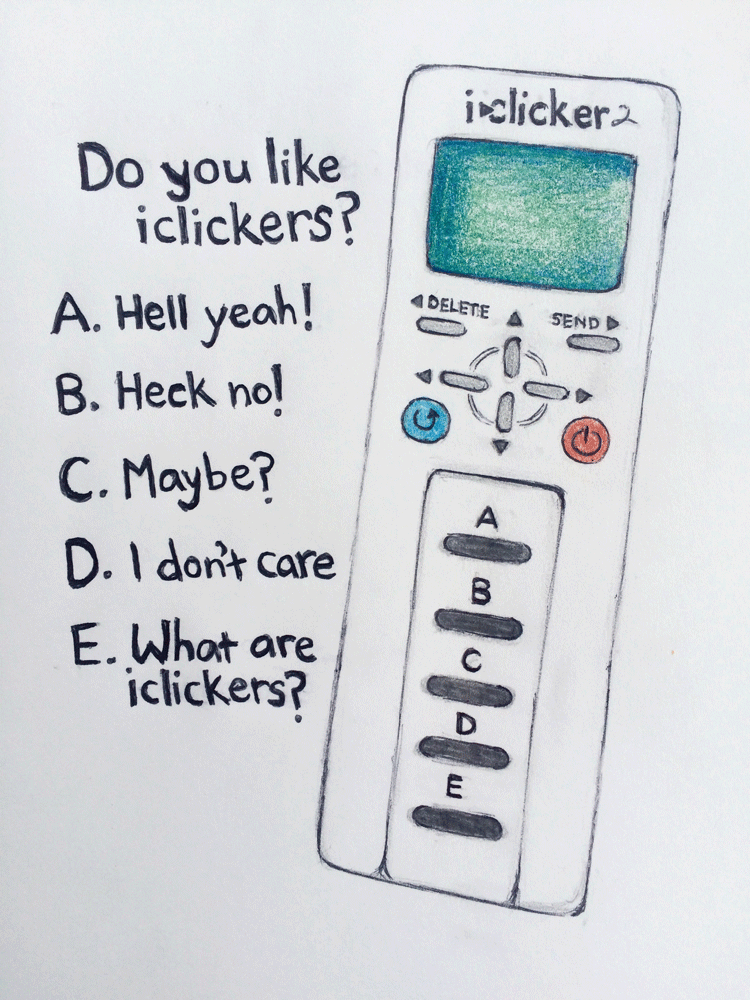
Spencer Wu
Staff Writer
If you have taken a general education course during your academic career here at UCSB, chances are that you’ve come across iClicker participation on the syllabus at least once. Through public forums and word of mouth, I have discovered that use of the iClicker has been met with both cheers and groans. Mandatory participation is a double-edged sword, potentially a grade booster while also making going to class required.
I asked a friend of mine recently regarding the issue and she said that, although she attends her classes regularly, the implementation of using participation as a part of the grade can end up being futile. For someone who attends classes religiously, it is no problem to press a letter A-E when the professor asks a question. This grading scheme is clearly implemented to encourage students to go to lecture and actively participate in discussion.
However, an easy way to circumnavigate this is to simply give the iClicker to a friend or classmate and have them click in for multiple people, a technique best saved for large lecture halls. This loophole essentially defeats the singular intended purpose of such a device.
This boils the problem down to attendance and what motivates students to attend class. One millennial media source, The Tab, ran an article estimating that each class missed on average is an estimated $58 down the drain, subsequently relating it to other terms of currency, like seven plates of Freebirds Nachos or eleven (!!!) Blenders smoothies. And that’s just a fifty minute class period that you’re skipping out on. Should students prioritize themselves or their grades more. Is a guaranteed A in a sliver of your overall grade more important or an extra hour or so of sleep?
Personally, I have no fault with having five, ten, even fifteen percent of your grade constituted by clicking a button. As a student, it is your responsibility to show up to class, save for a pressing matter of some sort. To me, it’s a way to reward students for doing the bare minimum- going to class. It keeps students alert and tentative throughout the fifty to hour and fifteen minute lecture and can provide interesting talking points as a springboard for discussion.
iClickers don’t help me learn. Beside broaching a question to the class, seeing how the class answers isn’t necessarily beneficial to me. What makes it worthwhile is the discussion that it sparks. That is where a majority of understanding and learning comes about. If these little remotes are a necessary way for students to start discussing issues related to what they’re learning in class, I don’t mind doling out a few bucks on one to enhance my education.
When looked at from an educational perspective and not an attendance-based necessary evil, iClickers can be blessings in disguise. They make students more inclined to go to class in the first place where this discussion inevitably takes place. Even if answers aren’t graded for correctness it is a reasonable and relatively cheap checks and balance system to ensure that attendance is a priority for students.










